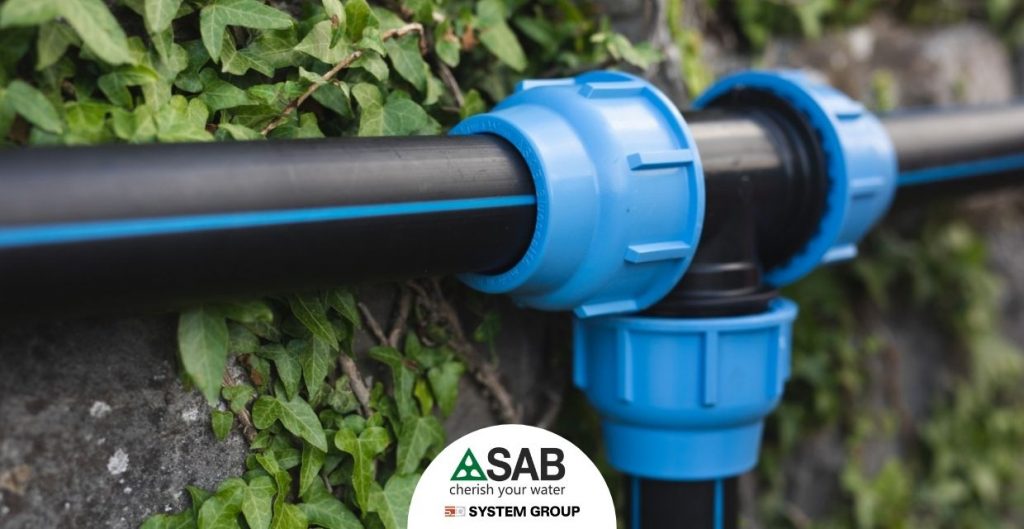Breakdowns in water networks are a serious problem for water management authorities. The costs to be sustained may rise due to the repair or the replacement of the pipeline. However, it is possible to prevent certain breakages through the use of quality materials. A sensitive element of the network is the junction point between the pipes, so it is very important to use certified and reliable fittings. In this article we will discuss the topic of compression fittings and how to recognise their quality and their reliability.

1. Compression fittings for polyethylene pipes.
Fittings for polyethylene pipes: the certifications
The compliance of compression fittings with regulatory and hygienic requirements, such as going through mechanical tests successfully and suitability for contact with drinking water, is demanded by many countries around the world.
In order to guarantee high-quality standards, the most recognized and trusted manufacturers are offering products on the market that are certified by accredited third parties who, through periodic surveillance visits and laboratory tests, ascertain and ensure that the required quality levels are maintained over time. Some of the internationally most recognised and respected certifying bodies are DVGW, KIWA and WRAS.
DVGW certificate
This type of certificate is essential for those polyethylene pipe fittings that are distributed in the German market and in those areas with German influence such as Austria, Switzerland, Slovenia and Northern Europe.
To obtain the certificate, which is issued by the German Institute, it is necessary to go through:
- First inspection visit;
- Toxicological tests and additional tests for the detection of bacterial growth on materials;
- Mechanical tests on the fittings;
- Periodic six-month inspections with collection of samples for laboratory tests.
KIWA certificate
The certification is required for fittings that are distributed in the Dutch market. This certificate is well known and internationally accepted thanks to its high-quality standard. In order to obtain the certificate, which is issued by the Dutch organisation, the following steps are required:
- First inspection visit;
- Toxicological tests and additional tests for the detection of bacterial growth on materials;
- Mechanical tests on the fittings;
- Periodic six-month inspections with collection of samples for laboratory tests.
WRAS certificate
Fittings that are used in aqueducts or water networks for the conveyance of drinking water in the UK must obtain this certification. The main purpose of this organisation is to safeguard water quality and protect public health, while at the same time to promote the efficiency of the installations and to reduce waste.
To obtain the certificate, the following requirements must be fulfilled:
- Technical requirements of the materials. In detail, for plastic materials the WRAS approval number or a valid test report according to BS6920 standard will be required;
- Mechanical and safety tests in accordance with regulations, successfully performed;
- Passing the mechanical and safety tests required by the regulations;
- Positive evaluation of the documents by the WRAS committee;
- Renewal of certification every 5 years.

1. SAB Quality certifications.
Raw materials in the drinking water fittings
The raw material from which fittings for drinking water are manufactured are also crucial. It is essential to work with companies that can provide solutions made from virgin raw materials certified for the contact with drinking water and with proven mechanical strength and long-term life cycle. Polypropylene is the material that SAB uses for the production of fittings for polyethylene pipe.
The importance of the gaskets in compression fittings
Compression fittings, also known as mechanical fittings, are one of the most widely used products on the market for joining pipes up to the diameter of 110 mm.
For the production of this kind of fitting, both the choice of raw materials and the quality of the elastomers for the gaskets are of fundamental importance.
The gasket is necessary to ensure a perfect seal between the elements that will be coupled, i.e. between the fitting and the pipe. The functions performed by the gasket are as follows:
- Compensate the surface irregularities in contact areas of the pipes, su as small scratches, etc.;
- Maintain the required level of elasticity and rigidity over time;
- Preserve the technical performance requirements under different environmental conditions;
- Always guarantee the perfect hydraulic tightness at the specified operating pressure values.
Using certified fittings with installed quality gaskets reduces the chances of failure or leakage and ensures optimal performance over time.

3. O-ring seal gasket for compression fittings.
Technical innovations in sealing systems
Among the features that determine the qualitative assessment of a compression fitting we can find technical innovations, very often patented, that indicate high performance and above-average quality standards.
To be precise, the classic sealing systems on compression fittings involve the use of O-ring gaskets which, while guaranteeing a high standard of quality, can present some difficulties during installation. In order to offer its customers products with increasingly better performance, SAB has developed, manufactured and patented a gasket with an innovative shape that facilitates the coupling with the pipes and at the same time guarantees an excellent tightness.
If you are looking for a solution that meets these quality standards, don’t miss the article on Blueseal, the fitting for drinking water developed by SAB.




